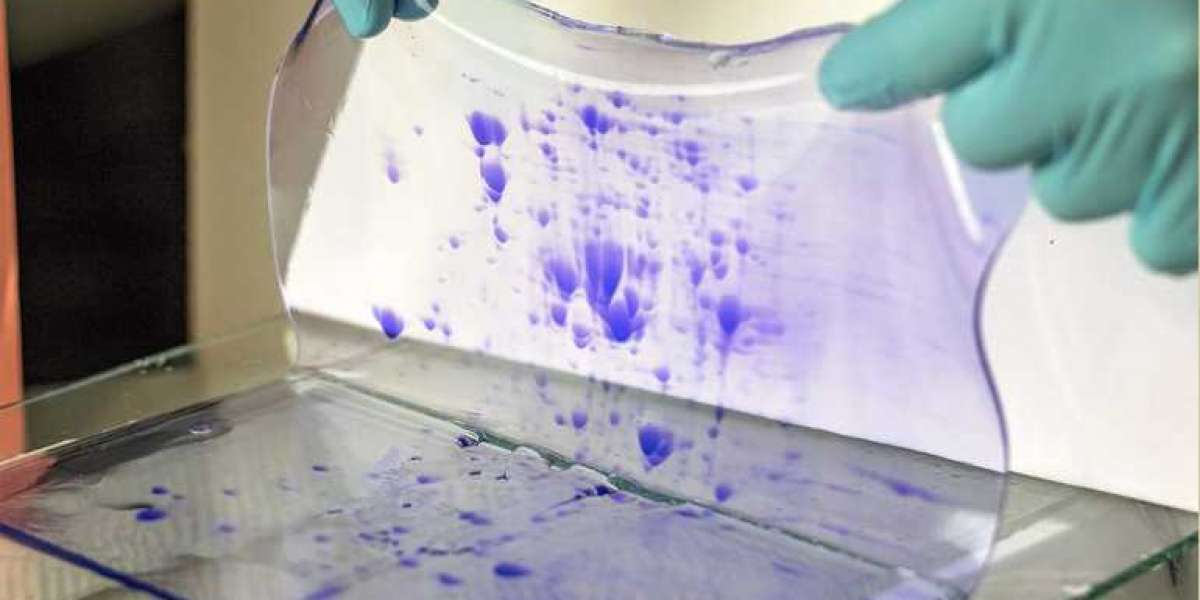Original Source: https://kendricklabs.blogspot.com/2023/10/unlocking-secrets-of-molecular.html
When it comes to analyzing proteins, one technique stands out as a cornerstone in the field of biochemistry: SDS-PAGE electrophoresis. Developed by Kendrick Labs Inc., this powerful method has been instrumental in our understanding of proteins and their various functions. In this article, we will explore the fundamentals of SDS-PAGE electrophoresis, its applications, and how it has revolutionized the world of molecular biology.
The Basics of SDS-PAGE Electrophoresis
SDS-PAGE, or Sodium Dodecyl Sulfate Polyacrylamide Gel Electrophoresis, is a widely used technique for separating proteins based on their molecular weight. It relies on the principles of electrophoresis to drive the movement of charged molecules through a gel matrix. Here's how it works:
Sample Preparation: First, the protein sample is prepared by denaturing the proteins using a detergent called SDS (Sodium Dodecyl Sulfate). This process unfolds the proteins and coats them with a negative charge, making them uniformly negatively charged.
Gel Casting: A gel is cast in a thin, flat slab format, typically made of polyacrylamide. The concentration of the gel can be adjusted to accommodate different sizes of proteins.
Loading and Electrophoresis: The prepared protein sample is loaded into wells at the top of the gel. When an electric field is applied, the negatively charged proteins migrate through the gel towards the positive electrode. Smaller proteins move through the gel more quickly, while larger ones move more slowly, resulting in separation based on molecular weight.
The outcome is a gel with well-separated protein bands, with each band representing a different protein in the sample. These bands can then be visualized, quantified, and analyzed to gain insights into the protein composition of the sample.
Applications of SDS-PAGE Electrophoresis
SDS-PAGE electrophoresis is a versatile technique with numerous applications in the field of molecular biology. Some of the key areas where it is employed include:
Protein Purity and Size Determination: Researchers use SDS-PAGE to determine the size and purity of proteins. By comparing the migration of sample proteins to known standards, they can estimate the molecular weight and confirm the integrity of purified proteins.
Protein Separation: SDS-PAGE is used to separate complex protein mixtures, such as those extracted from cells or tissues. It allows researchers to isolate and study individual proteins in detail.
Western Blotting: This technique is often used in conjunction with SDS-PAGE to transfer separated proteins to a membrane. The membrane is then probed with specific antibodies to detect and quantify target proteins.
Quality Control in Biotechnology: In biotechnology and pharmaceutical industries, SDS-PAGE is used for quality control of protein-based products, including vaccines, antibodies, and recombinant proteins.
Enzyme Activity Assays: Researchers can assess the activity of enzymes by comparing their migration patterns before and after treatment with specific substrates or inhibitors.
Diagnostic and Forensic Studies: SDS-PAGE is employed for genetic fingerprinting and forensic analysis, helping to identify individuals based on their unique protein profiles.
The Significance of SDS-PAGE Electrophoresis in Modern Science
SDS-PAGE electrophoresis has had a profound impact on modern science for various reasons:
Protein Characterization: It allows researchers to characterize proteins by their molecular weight, which is essential for understanding their structure and function.
Quality Control: In biotechnology and pharmaceutical industries, SDS-PAGE is a critical tool for quality control, ensuring the consistency and purity of protein-based products.
Diagnostic Tools: It has revolutionized diagnostic methods, particularly in the field of genetic and forensic analysis, where it helps in identifying individuals based on their unique protein profiles.
Enzyme Studies: SDS-PAGE is invaluable for studying enzymes and their activity, which is crucial in drug development and understanding biochemical pathways.
Research and Discovery: It is a fundamental technique in protein research, enabling scientists to make breakthrough discoveries in the fields of biochemistry, molecular biology, and cell biology.
Tips for Successful SDS-PAGE Electrophoresis
To ensure the success of your SDS-PAGE experiments, consider the following tips:
Sample Preparation: Properly denature and reduce your protein samples using SDS and a reducing agent. Ensure that your samples are mixed with a sample buffer to provide color and weight for easy tracking.
Gel Preparation: Pay attention to the composition of the gel, including the percentage of acrylamide and the size of the gel. These factors can be adjusted depending on the size range of proteins you want to separate.
Loading: Load your samples carefully, using a loading buffer to avoid sample precipitation and improve sample tracking. Include molecular weight markers for accurate sizing.
Running Conditions: Choose appropriate running conditions, including voltage, running buffer, and gel size. Ensure that your apparatus is properly assembled and free of leaks.
Staining and Visualization: After electrophoresis, you'll need to stain the gel to visualize the protein bands. Common stains include Coomassie Brilliant Blue and silver staining. Alternatively, you can use fluorescent stains for improved sensitivity.
Documentation: Document your results carefully, either by photographing the gel or using a gel documentation system. This step is crucial for later analysis and comparison.
Challenges and Future Developments in SDS-PAGE Electrophoresis
While SDS-PAGE is a powerful technique, it does have some limitations. One of the primary challenges is the limited resolution of very large or very small proteins, which may require alternative techniques for accurate analysis.
The future of SDS-PAGE electrophoresis may involve the integration of advanced imaging and data analysis techniques. Innovations in gel chemistry and imaging technology are continuously improving the sensitivity and accuracy of protein detection.
Furthermore, the combination of SDS-PAGE with other methods, such as mass spectrometry and capillary electrophoresis, is on the horizon. These hybrid approaches will provide a more comprehensive view of protein characteristics, including post-translational modifications and structural features.
Harness the Power of SDS-PAGE Electrophoresis
Are you ready to harness the power of SDS-PAGE electrophoresis in your research or industry? Kendrick Labs Inc. is your trusted partner, offering state-of-the-art solutions and expertise in the field of molecular separation. Contact us today to explore how SDS-PAGE can accelerate your research, improve your quality control, and help you make groundbreaking discoveries in the world of molecular biology. Don't miss the opportunity to unlock the secrets of protein analysis with the leading experts in the field. Join us in advancing science through SDS-PAGE electrophoresis. Your journey to scientific discovery begins here!








